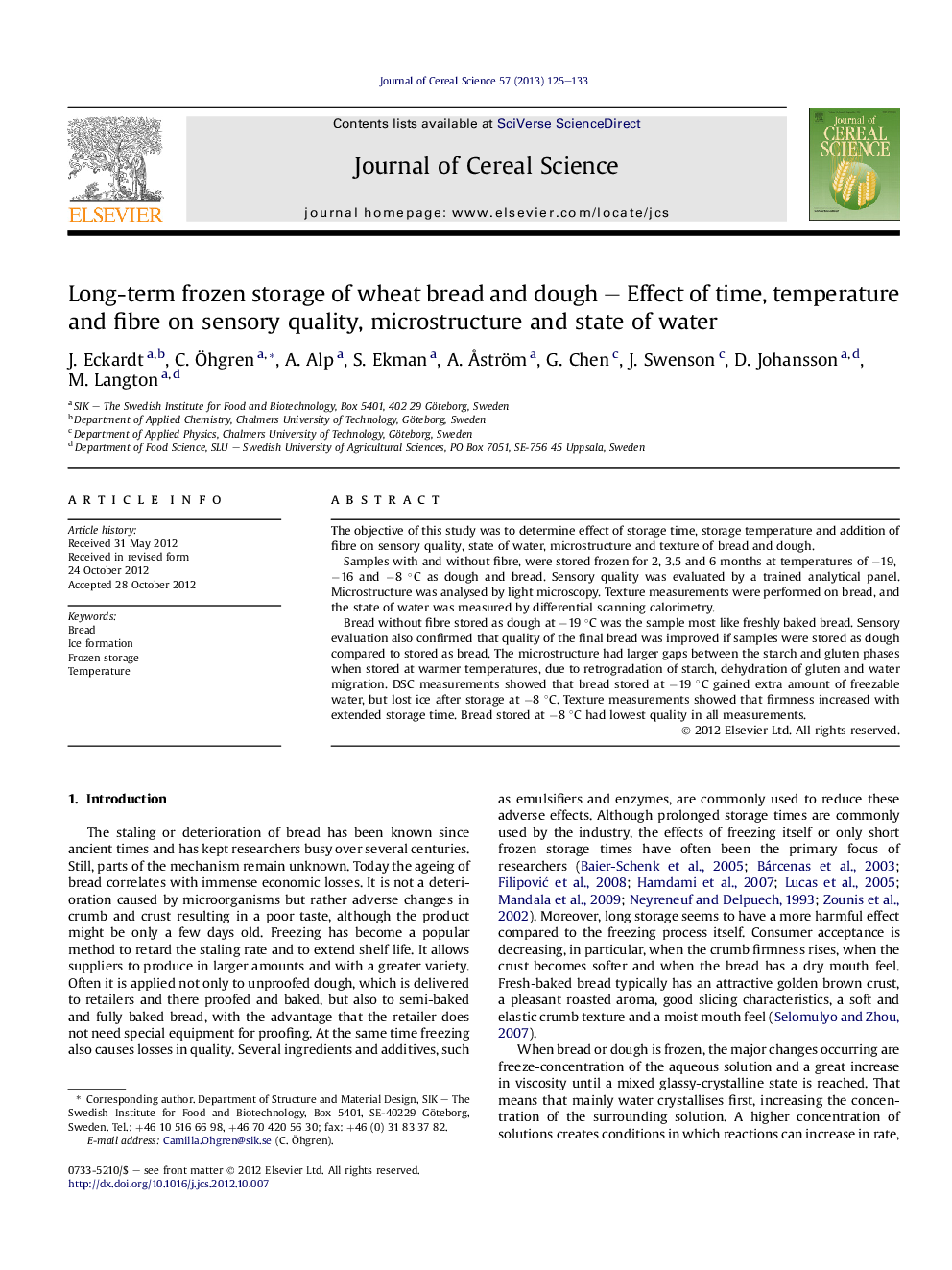| Article ID | Journal | Published Year | Pages | File Type |
|---|---|---|---|---|
| 4515919 | Journal of Cereal Science | 2013 | 9 Pages |
The objective of this study was to determine effect of storage time, storage temperature and addition of fibre on sensory quality, state of water, microstructure and texture of bread and dough.Samples with and without fibre, were stored frozen for 2, 3.5 and 6 months at temperatures of −19, −16 and −8 °C as dough and bread. Sensory quality was evaluated by a trained analytical panel. Microstructure was analysed by light microscopy. Texture measurements were performed on bread, and the state of water was measured by differential scanning calorimetry.Bread without fibre stored as dough at −19 °C was the sample most like freshly baked bread. Sensory evaluation also confirmed that quality of the final bread was improved if samples were stored as dough compared to stored as bread. The microstructure had larger gaps between the starch and gluten phases when stored at warmer temperatures, due to retrogradation of starch, dehydration of gluten and water migration. DSC measurements showed that bread stored at −19 °C gained extra amount of freezable water, but lost ice after storage at −8 °C. Texture measurements showed that firmness increased with extended storage time. Bread stored at −8 °C had lowest quality in all measurements.
► An interdisciplinary work with holistic view and large number of different analysis. ► Contributes to better understanding of the freezing of dough and bread. ► Mishandling of samples at −8 °C storage results in quality losses already after 3.5 months. ► Freezing of dough instead of bread results in better sensory quality.
